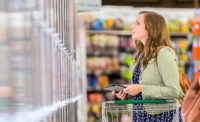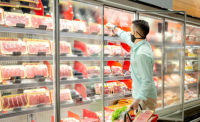State of the Industry
State of Packaging: Demographics drive meat, poultry and seafood packaging changes

Both flexible and rigid packaging will benefit from the fastest growing segment: ready-to-eat.
Demographics rule when decisions are made about meat, poultry and seafood packaging. Globally a growing world population and higher standards of living in developing regions foster exports and boost volume.
In fact, The Freedonia Group, a Cleveland, Ohio-based market research firm, cites rising export volume along with growth in the foodservice sector and prepared foods as drivers behind a projected 3.8 percent annual growth rate for meat, poultry and seafood packaging to $10.9 billion in 2019. The growth rate will be helped by the shift away from controlling fats and carbs in the diet to emphasizing protein consumption and gluten-free food. Other influencers are a desire for more sustainable packaging and less food waste.
In the United States, there is a growing number of elderly consumers, smaller households and households where all the adults work. As a result, interest is high in quick preparation, smaller portions and away-from-home meals.
The Freedonia report, “Meat, Poultry & Seafood Packaging, Industry Study with Forecasts for 2019 & 2024,” published in April 2015, projects strengthening demand for single-portion and smaller sizes, as well as convenient prepared foods. Smaller sizes also offer attractive retail price points that offset rising costs, especially for beef, pork and turkey, where increases have been significant.
For processors and retailers, case-ready products help maintain margins and continue to capture market share. Pre-packaged at a central location and ready for display, case-ready products minimize handling (less labor) and generate less waste for the retailer due to elimination of on-site preparation and longer shelf life. A case-ready program launched by Creekstone Farms Premium Beef, a supplier of premium USDA-certified beef and pork products in Arkansas City, Kan., provides an extended shelf life of 28 days from date of production. This longer sale interval minimizes markdowns, throwaways and food waste.
As a result, case-ready products, which already hold a substantial share of the market, will continue to grow. This growth will spur demand for the barrier films needed for the modified-atmosphere and vacuum packaging that protects freshness and maximizes the shelf life of case-ready products.
The need for longer shelf life and less food waste also will encourage the adoption of “active” packaging, which includes components such as sorbents, oxygen scavengers, desiccants and antimicrobial agents. Oxygen absorbers can be tailored to the product, help maintain product color and add time to the already extended shelf life provided by modified-atmosphere or vacuum packaging. Supplied as a component or integrated into the packaging material, options include oxygen-absorbing packets and labels.
Demand for prepared foods along with the performance and sustainability benefits of the lighter flexible packaging materials will help drive usage of stand-up pouches and vacuum pouches. The Freedonia study predicts, “Vacuum pouches will see expanded usage with fresh, frozen and processed items, while stand-up pouches will make further inroads into folding carton applications based on advantages including large billboard space, light weight and reduced material use.”
More prepared foods are appearing in vacuum packaging. Removing air from the package not only protects flavor, but also prevents freezer burn. Pier Fish Co., a 100-year-old, family-owned business in New Bedford, Mass., relies on the technology for its line of heat-and-serve seafood entrees. Individual vacuum-packed portions allow the consumer to prepare the desired number of entrees and minimize leftovers and waste.
For rigid packaging, the Freedonia report predicts the action will be in plastic containers rather than the more mature folding carton or metal can formats. Plastic containers, already well-established for store- and national-brand lunch meat and chilled or frozen barbecue meats, are favored for the widening array of prepared meat-, poultry- and seafood-based foods including locally prepared entrees found in supermarkets, warehouse club stores and other retail channels and national brand products such as Hormel Compleats and Healthy Choice Café Steamers microwaveable meals. The study warns, however, plastic containers face competition in the prepared foods arena from lower cost and lightweight formats such as windowed bags and handled pouches.
Both flexible and rigid packaging will benefit from the fastest growing segment: ready-to-eat. Ready-to-eat foods cut meal prep time for busy consumers and include items such as precooked bacon and rotisserie chicken.
The unabated demand for convenience means resealabilty will continue to be a popular design feature for both rigid and flexible packaging. Zippers frequently are found on multi-serving flexible packaging, while reclosable tubs are likely to remain a common choice for lunch meat and other products. The tubs not only protect multi-serving products by enabling repeated opening and reclosure, but also offer sustainability benefits because consumers love to reuse the dishwasher- and microwave-safe containers for leftovers.
On the packaging line, food safety and automation are top of mind. Food safety concerns are prompting adoption of contaminant-detecting metal detectors and X-ray systems and gas analyzers to determine residual oxygen levels as well as equipment that’s easier to clean. Manual operations are being automated with modular, flexible machines that can easily accommodate multiple pack styles. Flexible handling also is supported by a growing population of robots on meat, poultry and seafood packaging lines. NP
Looking for a reprint of this article?
From high-res PDFs to custom plaques, order your copy today!





